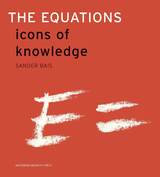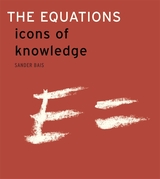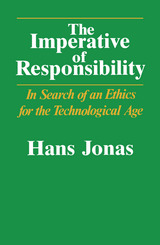
We know that nature speaks to us in the language of mathematics. In this language most of our basic understanding of the physical world can be expressed in an unambiguous and concise way. The most artificial language turns out to be the most natural of all. The laws of nature correspond to equations.
These equations are the icons of knowledge that mark crucial turning points in our thinking about the world we happen to live in. They form the symbolic representation of most of what we know, and as such constitute an important and robust part of our culture.
Publication coincides with the World Year of Physics: www.wyp2005.nl
“This beautifully designed book deserves a place on the coffee table .[..] Sander Bais confides the reader in the exciting secrets of the laws of nature, and does so in a clear, surprisingly poetic language.”
“The Equations is a catalogue. A catalogue that belongs to an exhibition of 17 typographic works of art – which gallery will frame them and hang them on the wall? The formulas, displayed in white symbols on a bright red background, are of an untouchable beauty .”
‘Untouchable icons’ - NRC Handelsblad
“The Equations is an absolute feast for everyone who is interested in what physicists have to say about the structure of the world and the beauty that emanates from this. It is a jewel of knowledge, written with love for the field but also with a great compassion for the reader.”
‘Knowledge smoothly surpasses the fear of formulas’ - de Volkskrant

The mysteries of the physical world speak to us through equations--compact statements about the way nature works, expressed in nature's language, mathematics. In this book by the renowned Dutch physicist Sander Bais, the equations that govern our world unfold in all their formal grace--and their deeper meaning as core symbols of our civilization.
Trying to explain science without equations is like trying to explain art without illustrations. Consequently Bais has produced a book that, unlike any other aimed at nonscientists, delves into the details--historical, biographical, practical, philosophical, and mathematical--of seventeen equations that form the very basis of what we know of the universe today. A mathematical objet d'art in its own right, the book conveys the transcendent excitement and beauty of these icons of knowledge as they reveal and embody the fundamental truths of physical reality.
These are the seventeen equations that represent radical turning points in our understanding--from mechanics to electrodynamics, hydrodynamics to relativity, quantum mechanics to string theory--their meanings revealed through the careful and critical observation of patterns and motions in nature. Mercifully short on dry theoretical elaborations, the book presents these equations as they are--with the information about their variables, history, and applications that allows us to chart their critical function, and their crucial place, in the complex web of modern science.
Reading The Equations, we can hear nature speaking to us in its native language.

This quantum story follows three lines in parallel: a pictorial, an explanatory and a mathematical one.

Einstein's Special Theory of Relativity, first published in 1905, radically changed our understanding of the world. Familiar notions of space and time and energy were turned on their head, and our struggle with Einstein's counterintuitive explanation of these concepts was under way. The task is no easier today than it was a hundred years ago, but in this book Sander Bais has found an original and uniquely effective way to convey the fundamental ideas of Einstein's Special Theory.
Bais's previous book, The Equations, was widely read and roundly praised for its clear and commonsense explanation of the math in physics. Very Special Relativity brings the same accessible approach to Einstein's theory. Using a series of easy-to-follow diagrams and employing only elementary high school geometry, Bais conducts readers through the quirks and quandaries of such fundamental concepts as simultaneity, causality, and time dilation. The diagrams also illustrate the difference between the Newtonian view, in which time was universal, and the Einsteinian, in which the speed of light is universal.
Following Bais's straightforward sequence of simple, commonsense arguments, readers can tinker with the theory and its great paradoxes and, finally, arrive at a truly deep understanding of Einstein's interpretation of space and time. An intellectual journey into the heart of the Special Theory, the book offers an intimate look at the terms and ideas that define our reality.
READERS
Browse our collection.
PUBLISHERS
See BiblioVault's publisher services.
STUDENT SERVICES
Files for college accessibility offices.
UChicago Accessibility Resources
home | accessibility | search | about | contact us
BiblioVault ® 2001 - 2025
The University of Chicago Press









